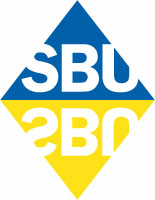Dyslexia in Children and Adolescents -- Tests and Interventions
Authors
Swedish Council on Health Technology AssessmentStockholm: Swedish Council on Health Technology Assessment (SBU); 2014 Aug.
Copyright © 2014 by the Swedish Council on Health Technology Assessment.
- By training children with dyslexia to associate speech sounds (phonemes) with letters (graphemes) in a structured way, improvements can be made in their reading comprehension, reading speed, spelling, and ability to pay attention to the language’s phonetic structure (phonological awareness).
- Due to insufficient evidence no conclusions could be drawn regarding the usefulness of other forms of literacy training or assistive technologies (tools for support, compensate and develop reading skills such as apps in the mobile phone).
- Some tests may predict dyslexia even before children have been formally taught to read and write in school. For instance, rapid automatized naming (RAN), deficits in phonological awareness or letter knowledge can be detected early and may be associated with dyslexia. Benefits and potential risks of such early testing procedures have not been evaluated in this report. Interventions for children before they have begun school have not been evaluated in this report.
- Only few of the international diagnostic tests were scientifically evaluated. Dynamic Indicators of Basic Early Literacy Skills (DIBELS) and Woodcock-Johnson Test of Achievement (WJ) have subtests that are reliable: DIBELS- Letter Naming Fluency and WJ- Word Identification/Letter-Word Identification, respectively DIBELS- Nonsense Word Fluency and WJ- Letter Word Identification/comprehension are validated.
Copyright © 2014 by the Swedish Council on Health Technology Assessment. All content unless otherwise noted is licensed under a Creative Commons Attribution-NonCommercial-NoDerivatives 4.0 International License.
Bookshelf ID: NBK316442, PMID: 26803870
